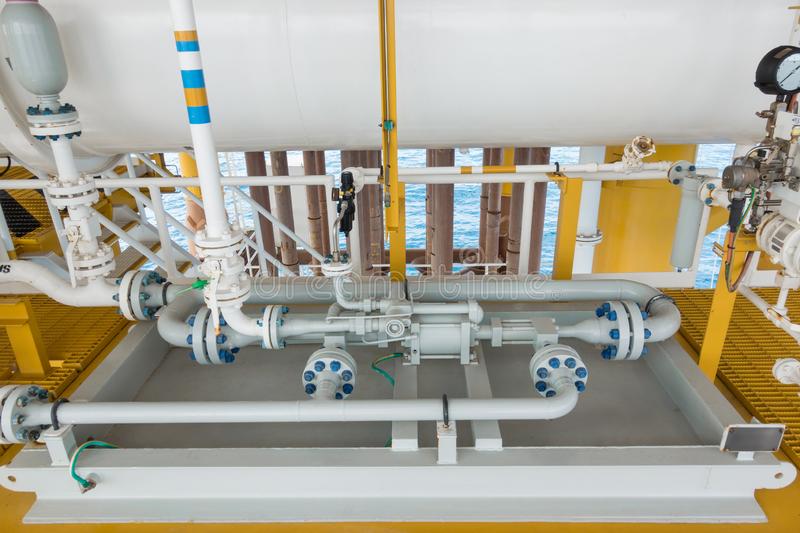What is a displacement reaction?
A displacement reaction is a chemical reaction that occurs by replacing one chemical species in a molecule with another chemical species. Displacement reactions take place in the presence of a more reactive species having a high binding affinity for a cation or anion present in a compound. The reactive species can be a metallic element, an anion or a cation.
Types of displacement reactions
There are two main types of displacement reactions which are:
- Single displacement reactions
- Double displacement reactions
These two types of reactions are categorized under different conditions such as side reactions, mechanism, conditions required for the reactions etc.
General form of a displacement reaction
The general form of a displacement reaction can be given below.
AB + C → AC + B
In the above reaction, B in the AB molecule was replaced with C. Therefore, C is a highly reactive chemical species with respect to B. To carry out the displacement reaction, A should have a binding affinity for B and C. B and C can be a metallic element, an anion or a cation.
The moved items can be predicted by looking at the reactivity series. The reactivity series is a list of items in the order of their reactivity, from the most responsive item to the least responsive item. Therefore, the items at the top of this list are very responsive compared to those at the bottom of the list. Then the elements of the lower part can be easily replaced by those of the upper part.
Displacement reaction examples
Example 1
Zn (s) + 2HCl (aq) → ZnCl 2 (aq) + H 2 (g)
The above reaction shows the displacement of H + cation by the metal Zn. Here Zn is linked to Cl – anion.
Example 2
Displacement reactions are commonly used to displace halogens from compounds. The order of the halogens in the reactivity series is F> Cl> Br> I. This means that fluorine represents the highest reactivity, while iodine represents the lowest reactivity. Therefore, if we need to get the liquid Br2 from NaBr solution, we can bubble Cl2 (g) and use a separation method to separate the liquid bromine. The reaction is given below.
NaBr (aq) + Cl2 (g) → NaCl (aq) + Br2 (aq)
If less reactive elements are added to a compound, no displacement will occur. For example, gold (Au) is not a very reactive metal, so it does not react with even certain acids like HCl.
When sodium is added to water, the reaction is explosive. This is due to the high reactivity of sodium. Sodium reacts with water to form sodium hydroxide (NaOH) and hydrogen gas (H2 ). There, sodium replaces H + from H-OH (water molecule).
Read trending contents on Evoking Minds
Simple displacement reaction
Definition of single displacement reaction
A single displacement reaction is a chemical reaction in which one reactant is exchanged for an ion of a second reactant. This is also referred to as a single replacement reaction.
Simple displacement reactions take the form A + BC → B + AC
Examples of single-displacement reaction
The reaction between metal zinc and hydrochloric acid to produce zinc chloride and hydrogen is an example of a single displacement reaction:
Example1
Zn (s) + 2 HCl (aq) → ZnCl 2 (aq) + H 2 (g)
Example 2
Another example is the displacement of iron from an iron (II) oxide solution using coke as the carbon source:
2Fe2 O3 (s) + 3C (s) → Fe (s) + CO2 (g)
Recognize a unique displacement reaction
Basically, when you look at the chemical equation of a reaction, a single displacement reaction is characterized by one locus of cation or anion exchange with another to form a new product. It is easy to spot when one of the reactants is an element and the other is a compound. Usually, when two compounds react, the two cations or both anions change partners, producing a double displacement reaction.
You can predict whether or not a single move reaction will occur by comparing an item’s responsiveness using an activity series table.
In general, a metal can remove any metal lower in the series of activities (cations). The same rule applies to halogens (anions).
Simple displacement or substitution reaction
A single displacement reaction or a substitution reaction is a common type of chemical reaction.
Read trending contents on Evoking Minds
What is a double displacement reaction?
Definition
A double displacement reaction is a chemical reaction that involves the exchange of two ionic species between two different molecules. The product formed is a new compound which can be a liquid or a solid. Double displacement reactions are also known as:
- Double offset response
- Salt metathesis reaction
- Double substitution reaction
- Exchange reactions
- Sometimes double decomposition reaction
Types Double Displacement Reactions
Double displacement reactions can be divided into several categories, including:
- Anti-ion exchange
- Alkylation
- Neutralization
- Acid-carbonate
- Reactions
- Aqueous metathesis with precipitation (precipitation reactions)
- Aqueous metathesis with double decomposition (double decomposition reactions).
These two types most commonly found in chemistry classes are the precipitation reaction and the neutralization reaction.
General form of double displacement reaction
The general form of this type of reaction is given below.
PQ + RS → PS + RQ
The bonds between the ions of the reactants are broken and new bonds are formed. These bonds can be ionic bonds or covalent bonds. Some precipitation reactions, acid-base reactions, and alkylation reactions are good examples of double displacement reactions.
Double displacement reaction examples
Example1
Li2 THEN4 (aq) + BaCl2 (aq) → 2LiCl (aq) + BaSO4 (s)
If we want to remove barium from a solution, we can just add lithium sulfate. Then barium sulfate (BaSO 4 ), which is a white precipitate, will be formed. Here, the SO4 2- ion was exchanged with Cl – barium chloride ions (BaCl 2 ). Most double displacement reactions form precipitates.
Example2
These double displacement reactions are also common in acid-base reactions. These are the neutralization reactions. For example, the reaction between NaOH (sodium hydroxide) and HCl (hydrochloric acid) is a neutralization reaction in which a double displacement occurs.
NaOH (aq) + HCl (aq) → NaCl (aq) + H2O (l)
In the above reaction, the Cl- ion is exchanged with the OH- ion. The new products are sodium chloride (NaCl) and a water molecule (H2O).
How to recognize Reaction Double Displacement
The easiest way to determine the double displacement reaction is to check to see if the cations of the anions have been exchanged with each other. Another key, if states of matter are given, is to look for aqueous reagents and form one solid product (since the reaction usually forms a precipitate).
A precipitation reaction occurs between two aqueous ionic compounds to form a new insoluble ionic compound. Here is an example of the reaction between lead (II) nitrate and potassium iodide to form (soluble) potassium nitrate and (insoluble) lead iodide.
Pb (NO3 )2 (p) + 2KI (aq) → 2KNO3 (aq) + PbI2 (s)
Lead forms of iodide are called sediment, while the solvent (water) and soluble reagents and products are called supernatants or supernatants. The formation of a precipitate drives the reactions in the forward direction as the product leaves the solution.
Is neutralization reaction a double displacement reaction:
Neutralization reactions are double displacement reactions between acids and bases. When the solvent is water, the neutralization reaction usually produces an ionic compound —a salt. This type of reaction proceeds in the forward direction if at least one of the reactants is a strong acid or a strong base. The reaction between vinegar and baking soda in classic volcano baking soda is an example of a neutralization reaction. This particular reaction then proceeds to release gas ( carbon dioxide ), which is responsible for the fizz of the reaction. Initial neutralization reaction:
A solution of NaHCO3 + CH3COOH (aqueous) → H2CO 3 + NACH3 THEIR
You will notice cations exchanged anions, but the method of connection is written, it is a little more difficult to notice anion exchanges. The key to defining a reaction as double displacement is to look at the atoms of the anions and compare them on both sides of the reaction
Read trending contents on Evoking Minds
Difference between displacement and double displacement reaction
Definition
Displacement reaction: A displacement reaction is a chemical reaction in which one chemical species of a molecule is replaced by another chemical species.
Double displacement reaction: A double displacement reaction is a chemical reaction that involves the exchange of two ionic species between two different molecules.
Shift
Displacement reaction: In displacement reactions, a chemical species is displaced.
Double displacement reaction: In double displacement reactions, two chemical species are displaced.
Replacement
Displacement reaction: In displacement reactions, a chemical species is replaced.
Double displacement reaction: In double displacement reactions, two chemical species are replaced.
Reactivity
Displacement reaction: Displacement reactions occur depending on the reactivity of chemical species.
Double displacement reaction: Double displacement reactions occur when exchangeable ions are included in compounds.
Conclusion
Double displacement reactions are a type of displacement reactions. In both reactions, displacement and replacement occur at the same time. The main difference between displacement reaction and double displacement reaction is that in displacement reaction only one chemical species is replaced, while in double displacement reactions two chemical species are replaced.


